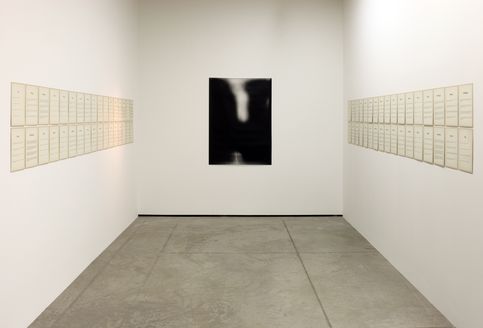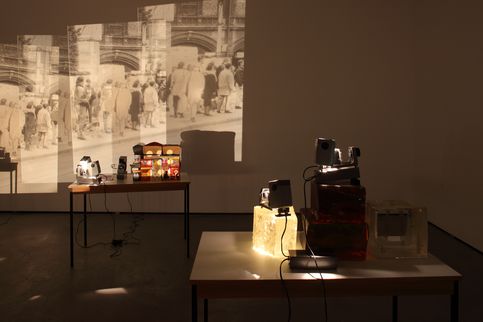Setting Things in Motion
Collections in Dialogue
Curators: Jürgen Dehm, Curator, Generali Foundation Study Center; Petra Reichensperger, Curator, Generali Foundation Collection; Margit Zuckriegl, Curator, Museum der Moderne Salzburg; Sabine Breitwieser, Director, Museum der Moderne Salzburg
Venue: Museum der Moderne Salzburg, Mönchsberg
The fourth presentation of the Generali Foundation Collection at the Museum der Moderne Salzburg.
This exhibition featured works from the Generali Foundation Collection—Permanent Loan to the Museum der Moderne Salzburg in dialogue with the museum’s own holdings and other collections entrusted to it, including the Austrian Federal Photography Collection, the Bank Austria FOTOGRAFIS collection, and the MAP collection. Under the motto Setting Things in Motion, artistic investigations of sculpture with film and video met New Objectivity in photography. New acquisitions were set off in a fascinating manner with rediscoveries and highlights of the collections. The playful confrontation with this subject matter extended from the materiality of art, through dance and choreography, to the social context, with a focus on the utopian potential of art.
When objects move, changes take place. Objects that literally change position can be disturbing. The introduction of objects into art in the early twentieth century brought with it a re-examination of the question of what art is about and how it is created. Everyday items are used in sculpture, and the artist’s intention and creation process become works of art in themselves.
Objects are often indispensable but inconspicuous elements in our everyday life, and their influence on our way of living usually goes unnoticed. In art, by contrast, the relationship between objects and human perception is of particular interest. At the same time, the materiality of artworks is inferred from the human body, which becomes a sculptural or shape-giving material. Like ritual objects that are attributed mystical effects, some artworks temptingly invite the observer to touch them, which is not allowed. They testify to diverging cultural interpretations. Other works have as their subject socio-political changes, setting a ball rolling that can bring about incisive social revolutions or observing them over time.
How do artists approach the materiality of art? How do objects communicate interpersonal relations? What role does the design of objects play in our society? The exhibition looked at objects in art from the nineteenth to twenty-first centuries in the light of these questions and their various semantic interpretations.
Artists: Kader Attia, Herbert Bayer, Arthur Benda, Ladislav Berka, Marcel Broodthaers, Max Ernst, Sylvie Fleury, Günther Förg, Simone Forti, Seiichi Furuya, Rainer Ganahl, Isa Genzken, Bruno Gironcoli, Dan Graham, Ulrike Grossarth, Joachim Koester, Jarosław Kozłowski, Heinz Loew, Édouard Manet, Anja Manfredi, Dóra Mauer, Bruce Nauman, Paul Outerbridge, Sigmar Polke, Florian Pumhösl, Albert Renger-Patzsch, Dieter Roth, Franz West, Heimo Zobernig



